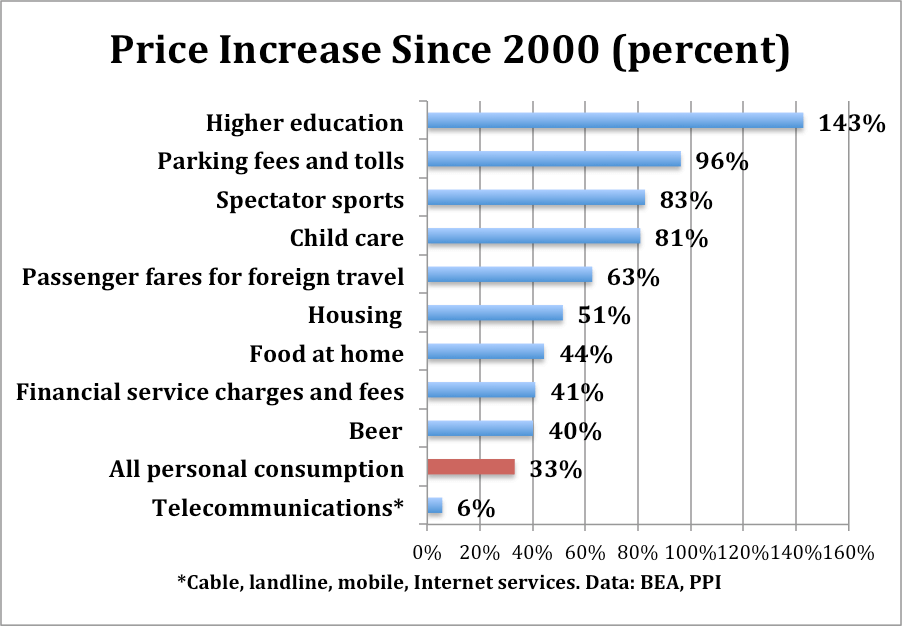We think of the United States as a low-inflation economy, with an overall price increase of 36% since 2000, or less than 2% a year. But the fact is, the inflation performance of different industries has varied greatly since 2000. For example, the price of construction has gone up more than 100% since 2000, as measured by the BEA’s implicit value-added price index. The price of educational services has gone up by 80%, and the price of air travel has gone up by 76%.
By comparison, according to the BEA, the value-added price of broadcasting and telecom services has fallen by 22% since 2000, while the price of computer and electronic products has fallen by 62%.
The high-inflation industries tend to be on the physical side of the economy. As they get more expensive, they eat away at living standards. Think about it. Americans spend only 6% of their consumption dollars on tech/telecom goods and services, as measured by the BEA. Other areas, such as housing, health, food, and transportation, are far more important for consumer spending.
That’s why we are suggesting a different way of prioritizing where we should focus our competition policy. Take a look at the 2×2 matrix below, where we categorize industries by whether they are high-inflation or low-inflation, and high-innovation or low-innovation.
Competition Policy Matrix
| High innovation | Low innovation | ||
| Rapid price increase
|
Air travel, construction, education | ||
| Slow price increase | Tech/telecom | ||
We suggest that progressive competition policy should focus on the upper right-hand quadrant–those industries where prices are increasing rapidly and innovation has been slow. There are two issues in these industries. First, has market power pushed up prices and held back innovation? Second, is government regulation helping support that market power?
Moreover, it also often turns out that high-innovation, low-inflation industries produce more jobs than low-innovation, high-inflation industries. Take a look at the table below, which just focuses on performance since 2007. The value added price index for air travel has risen almost 55% since 2007, according to the BEA. Meanwhile, prices for the tech/telecom sector has fallen more than 6%. And tech/telecom is clearly more innovative than air travel.
Over the same period, jobs have grown three times as fast in the tech/telecom sector as in air travel (including supporting services).
| Comparing Performance | ||
| change since 2007 | ||
| Air travel | tech/telecom | |
| Price change | 54.5% | -6.4% |
| jobs (thousands) | 16.5 | 498.5 |
| jobs (percent) | 2.5% | 7.6% |
We suggesting that tackling market power in high-inflation, low-innovation industries could help boost growth, raise living standards, and create more jobs.





